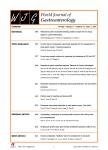版权所有:内蒙古大学图书馆 技术提供:维普资讯• 智图
内蒙古自治区呼和浩特市赛罕区大学西街235号 邮编: 010021

作者机构:Frank Laboratory Radiology and Imaging Sciences Clinical Center National Institutes of Health Gastroenterology and Hepatology Sciences Graduate Program Universidade Federal do Rio Grande do Sul National Institute of Biomedical Imaging and Bioengineering National Institutes of Health
出 版 物:《World Journal of Gastroenterology》 (世界胃肠病学杂志(英文版))
年 卷 期:2018年第24卷第38期
页 面:4341-4355页
核心收录:
学科分类:1002[医学-临床医学] 100201[医学-内科学(含:心血管病、血液病、呼吸系病、消化系病、内分泌与代谢病、肾病、风湿病、传染病)] 10[医学]
基 金:supported by the Intramural Research Programs of the Clinical Center the National Institute of Biomedical Imaging and Bioengineering at the National Institutes of Health and CAPES (Coordination for the Training of Higher Education Personnel Ministry of Education) from Brazil
主 题:Ulcerative colitis Dextran sulfate sodium Proteomics Inflammatory bowel diseases Inflammation
摘 要:AIM To investigate the temporal clinical, proteomic, histological and cellular immune profiles of dextran sulfate sodium(DSS)-induced acute *** Acute colitis was induced in C57 BL/6 female mice by administration of 1%, 2% or 3% DSS in drinking water for 7 d. Animals were monitored daily for weight loss, stool consistency and blood in the stool, while spleens and colons were harvested on day 8. A time course analysis was performed in mice ingesting 3% DSS, which included colon proteomics through multiplex assay, colon histological scoring by a blinded investigator, and immune response through flow cytometry or immunohistochemistry of the spleen, mesenteric lymph node and *** Progressive worsening of clinical colitis was observed with increasing DSS from 1% to 3%. In mice ingesting 3% DSS, colon shortening and increase in proinflammatory factors starting at day 3 was observed, with increased spleen weights at day 6 and day 8. This coincided with cellular infiltration in the colon from day 2 to day 8, with progressive accumulation of macrophages F4/80^+, T helper CD4^+(Th), T cytotoxic CD8^+(Tcyt) and T regulatory CD25^+(Treg) cells, and progressive changes in colonic pathology including destruction of crypts, loss of goblet cells and depletion of the epithelial barrier. Starting on day 4, mesenteric lymph node and/or spleen presented with lower levels of Treg, Th and Tcyt cells, suggesting an immune cell tropism to the gut. CONCLUSION These results demonstrate that the severity of experimental colitis is dependent on DSS concentration, correlated with clinical, proteomic, histological and cellular immune response on 3% DSS.